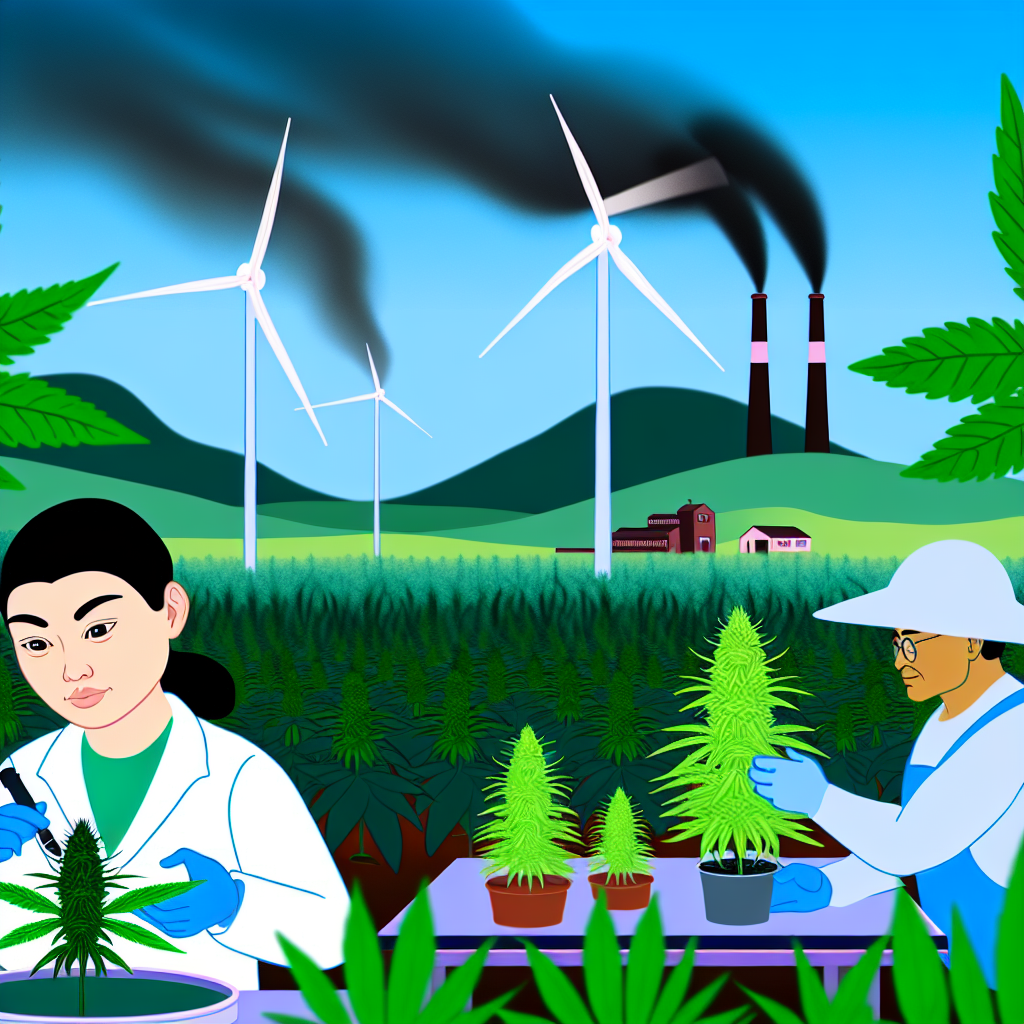Environmental Impact of the Cannabis Industry
Introduction
The rapid expansion of the cannabis industry has brought significant economic and medical advancements, but its environmental impact remains an important yet often overlooked issue. With increasing legalization worldwide, cannabis cultivation and production are scaling up dramatically, leading to environmental concerns related to water usage, energy consumption, pesticide application, plastic waste, and carbon footprint.
One of the most pressing environmental issues in cannabis cultivation is its water demand. Depending on the growing method, cannabis plants require substantial water, particularly in outdoor settings where natural resources may already be strained. In regions with limited water supply, increased cultivation can exacerbate drought conditions. Additionally, illegal cannabis operations often divert water from sensitive ecosystems, further damaging local biodiversity.
Energy consumption is another major environmental factor in cannabis production. Indoor cannabis cultivation relies on artificial lighting, ventilation, and climate control systems, which demand substantial electricity. A study published in *Nature Sustainability* found that indoor cannabis cultivation can produce up to 5,184 kilograms of CO₂ emissions per kilogram of dried flower—comparable to the emissions from other energy-intensive industries such as aluminum and steel production (Mills, 2021). Greenhouse operations can mitigate energy use to some degree but still contribute considerably to overall consumption.
Pesticide use in cannabis farming is another considerable environmental concern. Many growers use chemical pesticides, fungicides, and herbicides to protect their crops, leading to potential contamination of soil and water sources. In traditional agriculture, pesticide regulations minimize environmental impact, but cannabis remains under separate regulatory frameworks in many regions. This lack of standardized environmental guidelines allows harmful chemicals to enter ecosystems, negatively affecting wildlife and human health.
Beyond cultivation, the cannabis industry also produces significant waste. Packaging regulations in many legal markets require multiple layers of plastic, glass, or metal to ensure product safety and compliance. While these strict packaging laws aim to protect consumers, they contribute to growing plastic waste problems. Additionally, improper disposal of cannabis plant waste—such as stems, leaves, and roots—can lead to methane emissions when deposited in landfills instead of being properly composted or repurposed.
As the cannabis industry continues to grow, addressing its environmental impacts through innovative sustainability practices will be essential to ensuring long-term economic and ecological balance. Exploring solutions such as organic farming, renewable energy adoption, and improved waste management can help minimize the industry’s footprint while supporting its development in a responsible and eco-friendly manner.
Features
💧 Water Usage: How Can the Cannabis Industry Become More Sustainable?
Water scarcity is a significant issue in cannabis agriculture, particularly in drought-prone states such as California, where a large percentage of U.S. cannabis is cultivated. Research suggests that cannabis plants require approximately six gallons of water per day during peak growing seasons (Bauer et al., 2015).
To address this, sustainable farming solutions such as:
– **Drip irrigation:** Reduces water waste by delivering moisture directly to plant roots.
– **Rainwater collection systems:** Provides an alternative water source, reducing dependency on municipal water supplies.
– **Hydroponic growing methods:** Uses significantly less water than soil-based cultivation.
– **Drought-resistant cannabis strains:** Require lower water inputs while maintaining high yields.
By implementing these techniques, cannabis growers can help reduce the industry’s water footprint while promoting sustainability.
🌱 Indoor vs. Outdoor Cultivation: Which Has a Lower Carbon Footprint?
One of the most comprehensive studies on the environmental impact of indoor cannabis cultivation was published in *Nature Sustainability* by Mills et al. (2021). This study found that indoor operations can generate carbon dioxide emissions equivalent to industrial manufacturing due to high energy requirements for:
– **Climate control** to maintain optimal temperatures.
– **Dehumidification** to regulate moisture levels.
– **Artificial lighting** to promote plant growth year-round.
Comparatively, outdoor cultivation requires significantly lower energy inputs but may be more susceptible to water-related concerns. Hybrid models, such as **greenhouse cultivation with solar power integration**, offer a sustainable alternative that lowers energy use while still providing controlled environmental conditions.
⚠️ Chemical Waste and Soil Health: The Hidden Dangers of Pesticides
The impact of pesticide use on cannabis crops continues to be a subject of research, with studies indicating that harmful agricultural chemicals can persist in soil and water for extended periods (Short et al., 2021). In cannabis farming, the use of **synthetic pesticides, fungicides, and herbicides** can:
– **Contaminate groundwater** and nearby ecosystems.
– **Pose potential health risks to consumers.**
– **Reduce soil biodiversity**, affecting long-term soil productivity.
To mitigate these risks, farmers are adopting **organic and regenerative farming** techniques that promote:
– **Biodiversity-based pest management** without synthetic chemicals.
– **Healthy soil practices** such as crop rotation and composting.
– **Natural alternatives** like neem oil and beneficial insects for crop protection.
By transitioning to these eco-friendly methods, cannabis farmers can ensure healthier soils and safer products for consumers.
🛍️ Plastic Waste: The Packaging Problem in the Cannabis Industry
Legal cannabis markets impose strict packaging regulations that often result in excessive plastic waste. A 2020 study by the *Waste360* research group estimated that cannabis packaging waste could exceed **one billion** units annually in North America alone (Whiteside, 2020).
Potential solutions to combat this issue include:
– **Biodegradable and compostable packaging** made from hemp or plant-based materials.
– **Recyclable options** that encourage customers to return packaging for reuse.
– **Bulk purchasing programs** to reduce single-use packaging waste.
Hemp-based packaging innovations are also gaining traction, offering a renewable, plant-based alternative to traditional plastics.
Conclusion
The cannabis industry, while a booming economic force, must confront its substantial environmental challenges to ensure it remains sustainable. Issues such as excessive water use, high carbon emissions, pesticide contamination, and plastic waste all demand strategic solutions.
As professionals and consumers within the cannabis space, adopting and advocating for:
✅ **Sustainable farming practices**
✅ **Energy-efficient cultivation methods**
✅ **Eco-friendly packaging solutions**
…will be crucial for reducing cannabis’s environmental footprint. Moving forward, industry leaders and policymakers must prioritize environmentally responsible regulations to protect ecosystems while supporting the continued growth of this promising sector.
References
– Bauer, S., Olson, J., Cockrill, A., van Hattem, M., Miller, L., Tauzer, M., & Leppig, G. (2015). *Impacts of Surface Water Diversions for Marijuana Cultivation on Aquatic Habitat in Four Northwestern California Watersheds*. PLoS One. https://journals.plos.org/plosone/article?id=10.1371/journal.pone.0120016
– Mills, E. (2021). *The Carbon Footprint of Indoor Cannabis Production*. Nature Sustainability. https://www.nature.com/articles/s41893-021-00691-w
– Short, G., Miller, M., & Kegley, S. (2021). *Pesticide Contamination in Cannabis: Environmental and Consumer Risks*. Environmental Health Perspectives. https://ehp.niehs.nih.gov/doi/full/10.1289/ehp.2100201
– Whiteside, M. (2020). *How the Cannabis Industry is Tackling Waste and Sustainability*. Waste360. https://www.waste360.com/sustainability/cannabis-industry-sustainability
Summary:
The rapid expansion of the cannabis industry has brought significant economic and medical advancements, but its environmental impact remains a critical issue. Key concerns include high water usage, energy-intensive indoor cultivation, pesticide contamination, and excessive plastic waste. To address these challenges, the industry must adopt sustainable farming practices, renewable energy solutions, and eco-friendly packaging alternatives. By prioritizing environmental responsibility, the cannabis sector can ensure long-term viability and minimize its ecological footprint.




